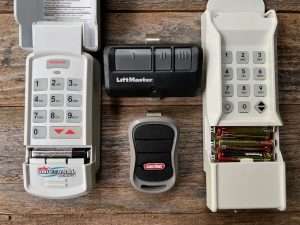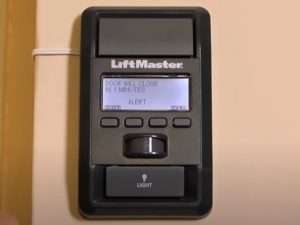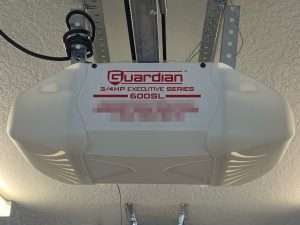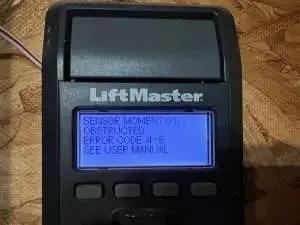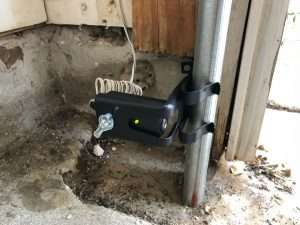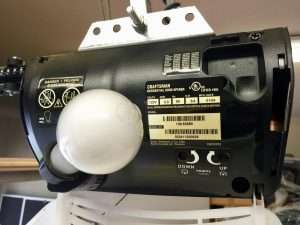Common Signs of a Broken Garage Door Spring

If your garage door is not opening, you may have a broken spring, which can be a real inconvenience. Many homeowners don’t realize the spring is what lifts their garage door, not the automatic opener. Educating yourself when it comes to the operation of your garage door will help you make better decisions when dealing with a repair company.
A garage door is the largest moving object in your home, and it has many moving parts. Garage door spring replacement is the most common repair, and it is very dangerous, so it’s best to leave it to a professional. In this article, we are going to discuss ten common signs of a broken spring on your garage door.
Garage Door Cables Are Loose

The garage door cables will appear to be broken, but typically, they are just loose because the spring has no tension.
When a garage door service company gets a phone call regarding a broken spring, the first thing the homeowner usually says is “the cables are broken”. This makes sense because the cables on a garage door will fly every which way, fall to the ground, become disconnected from the door, or even get caught in between the garage door and the jamb. It is rare for cables to break when a garage door spring breaks. If your garage door has two torsion springs, the second spring will keep the cables tight and on the drums. You will have to look up at the springs to determine if one is broken.
Wayne Dalton Garage Door Locked in the Up Position
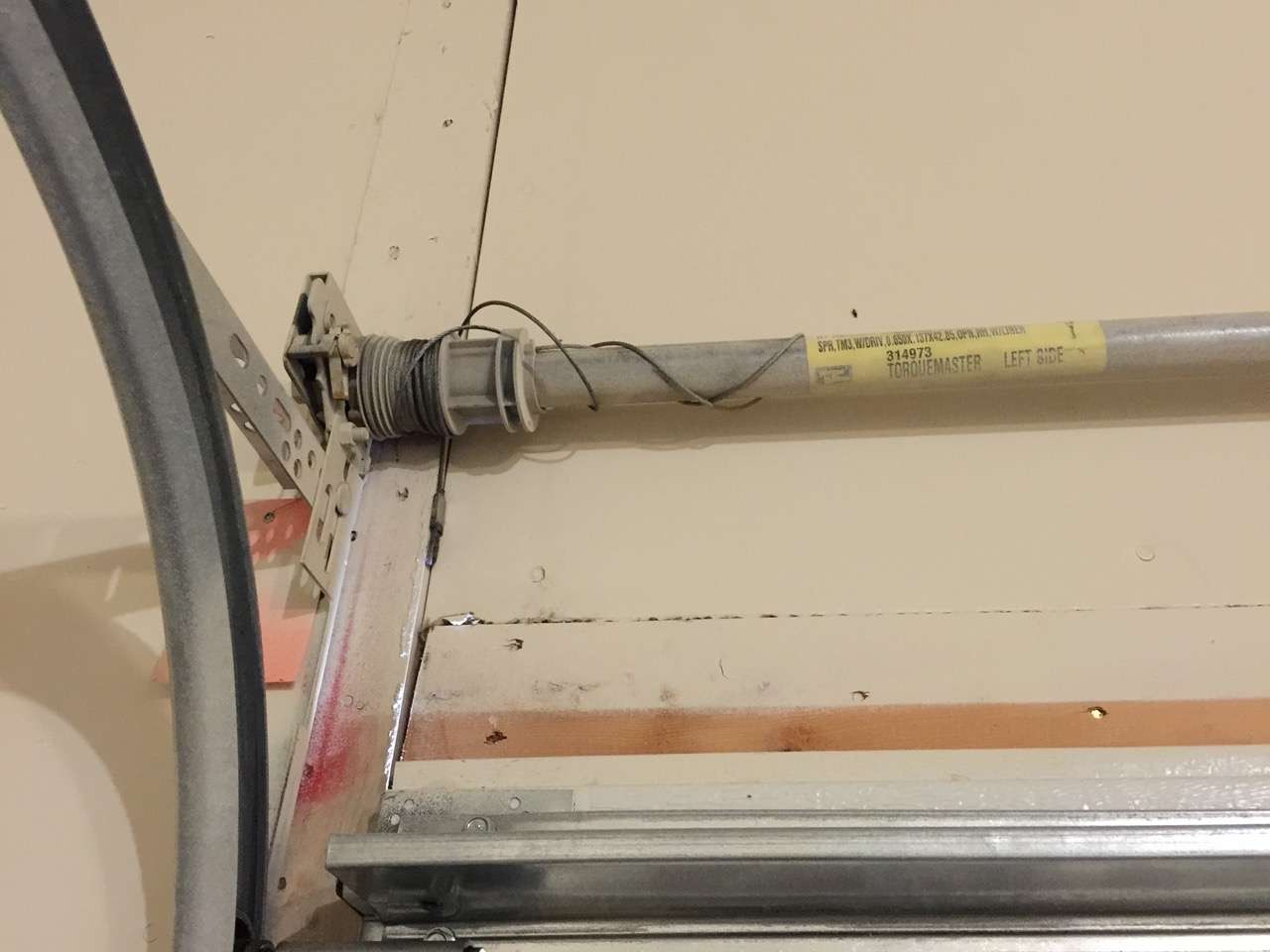
If you have a Wayne Dalton TorqueMaster system (pictured above), the springs will be inside a tube. The only way to determine if one is broken is to lift the garage door manually. If the door is heavy (roughly 65lbs for a double car door), you most likely have a broken spring inside the TorqueMaster tube. Another way to tell if you have a broken spring in your Wayne Dalton Torquemaster tube is if the door goes up and won’t go back down.
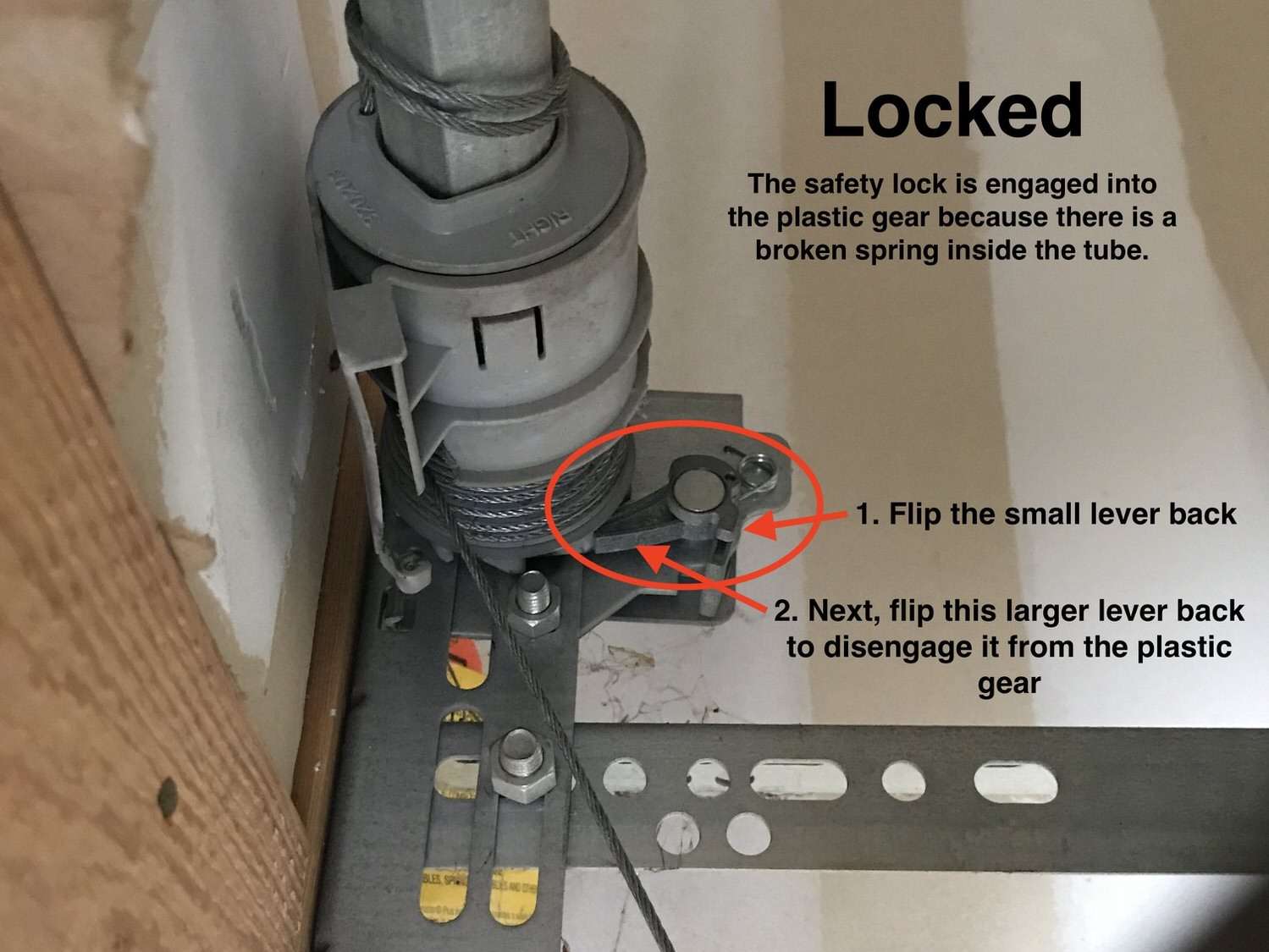
The Torquemaster system has a lock built into each side of a double car door that will activate when a spring breaks, causing the door to lock in the up position. It is simple to deactivate this lock and get your door closed. You can guarantee you have a broken spring inside the Torquemaster tube on the side where the lock activated.
When this spring breaks, the lever will activate into the gear and make a clicking noise when the garage door is raised. This clicking noise is the lever locking into the gear as the door goes up. Once the door is up, it will not close because that lever is in the groove of the gear, not allowing it to move freely. If you heard this noise, then you definitely have a broken spring.
You will need the spring inside replaced or have it converted over to a standard torsion spring set up, which is what we recommend and a service we perform quite frequently. A standard torsion spring will last 3 times longer than the small spring inside the Torquemaster tube.
PRO TIP: If you intend to flip the switch back to unlock the Torquemaster system, make sure you have two people to help with closing the garage door. One person should be holding the garage door in the up position while the other flips the switch back. Once it is unlocked, two people can slowly lower the garage door safely.
Garage Door Goes up 6 Inches and Stops
Most homeowners never know they have a broken garage door spring until they try to leave their home. You go in the garage to open the door, push the wall button, and the door only goes up 6 inches. The reason for this is the opener force or sensitivity has activated, causing the opener to stop pulling the door up. This is a safety feature built into most garage door openers. It is actually a good thing when the open force activates to prevent any damage to your garage door or opener.
Another scenario is the garage door goes up very slowly when using the automatic opener. Some garage door openers have DC motors that start off slow when opening and then kick into a higher speed. If you have a broken spring, the opener might stay at a slower speed due to the heavy weight of the garage door. If this happens to you, fully close the garage door and pull the emergency release rope. Next, try to lift the door. If it is really heavy, then you most likely have a broken garage door spring.
You Heard a Very Loud “Bang” in the Garage
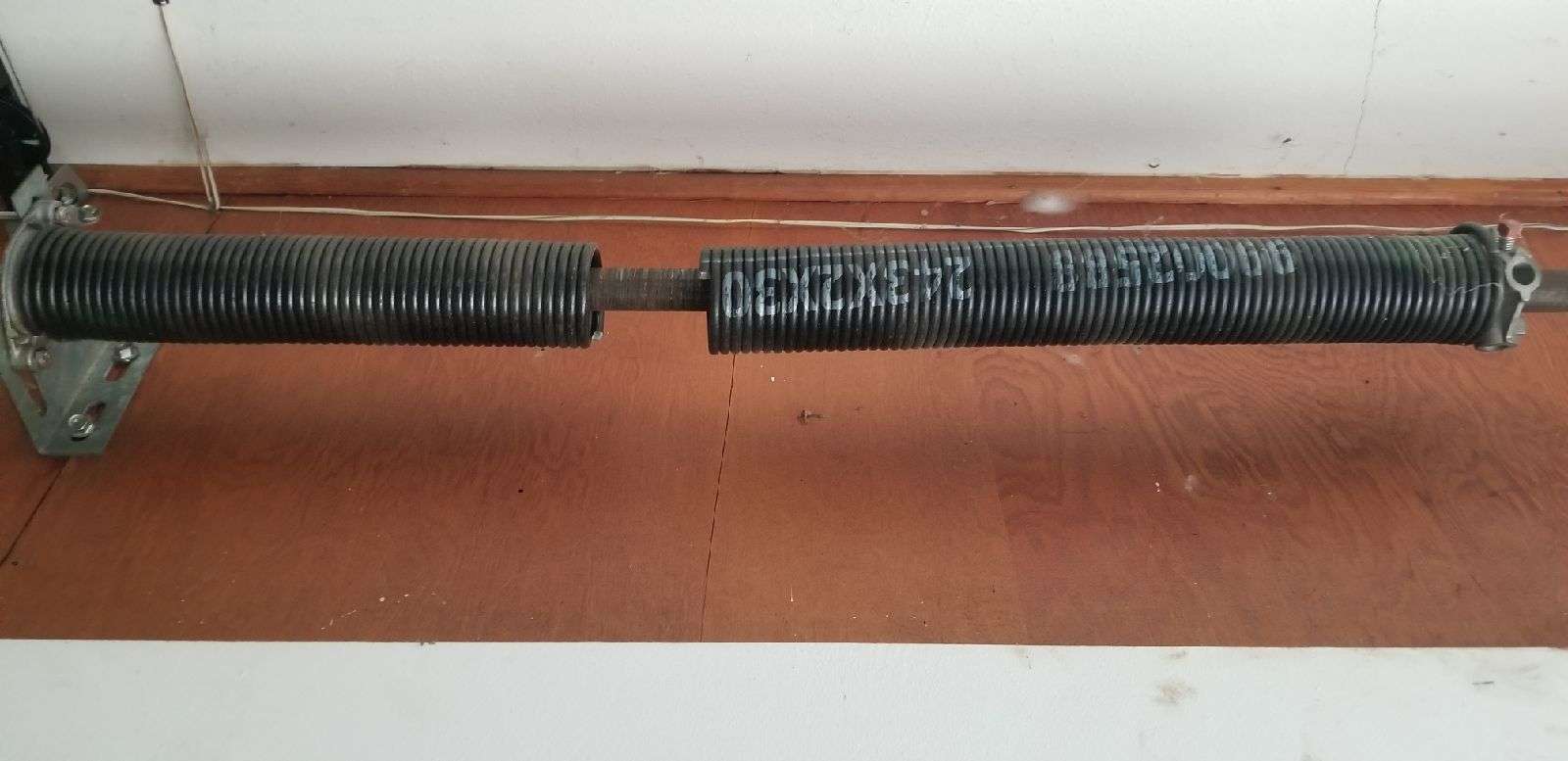
When a spring breaks on a garage door, a tremendous amount of energy is displaced. Torsion springs are mounted over the garage door, and they have a shaft running through the middle. When they break, the spring unwinds in less than a second and creates a loud noise due to the coils spinning on the shaft. Based on customer feedback, it can be quite startling.
Homeowners usually claim they heard a large noise coming from the garage. Most think someone is trying to break into their home. They walk outside and typically don’t notice anything until the next morning when they try to leave for work.
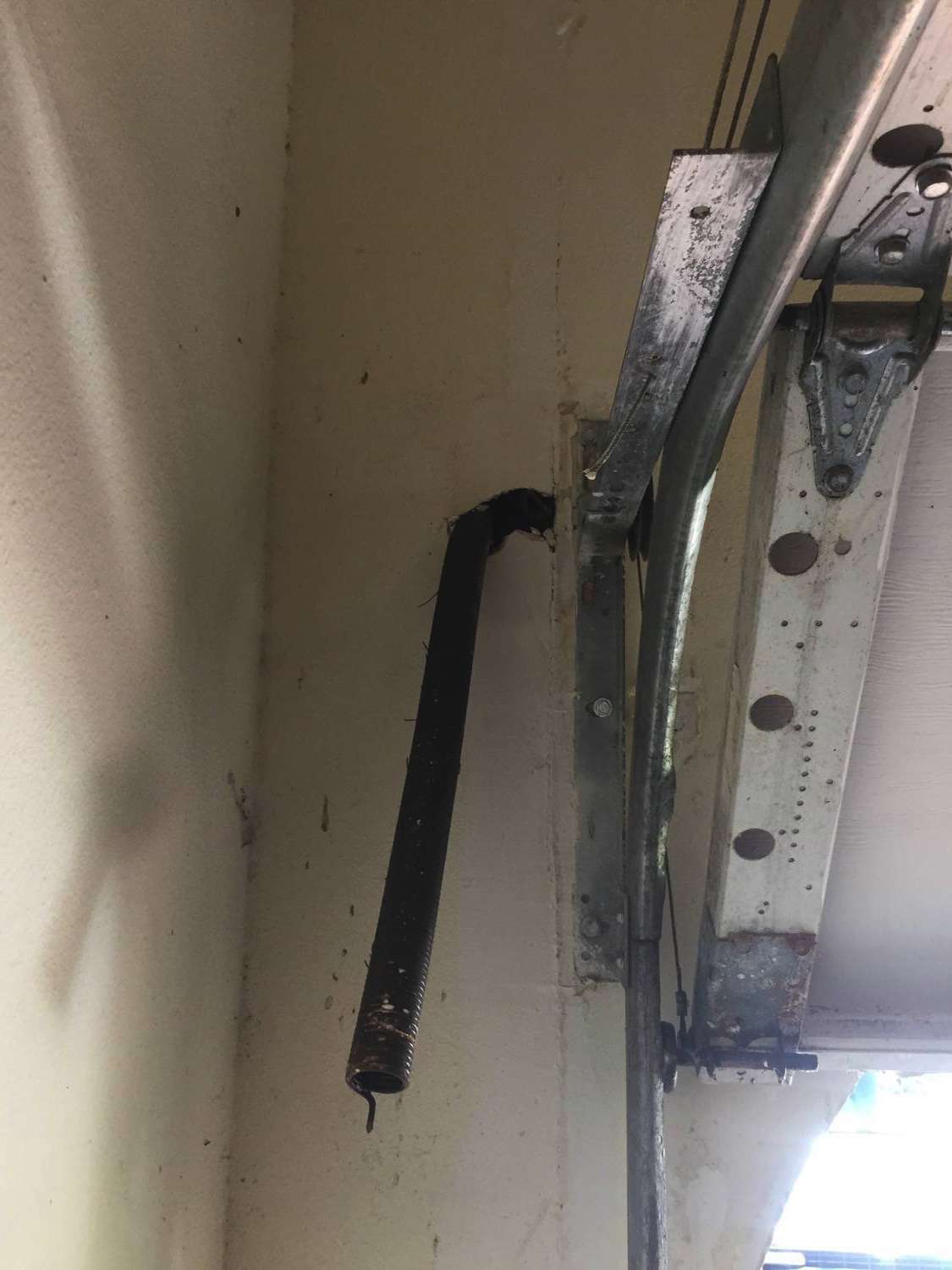
Extension springs are more obvious because the spring and cable is often hanging down or laying on the floor. They can be very dangerous if there is not a safety cable running through the middle of an extension spring. The safety cable is what keeps the spring in place when it breaks.
There Is a 2-Inch Gap in Your Torsion Spring
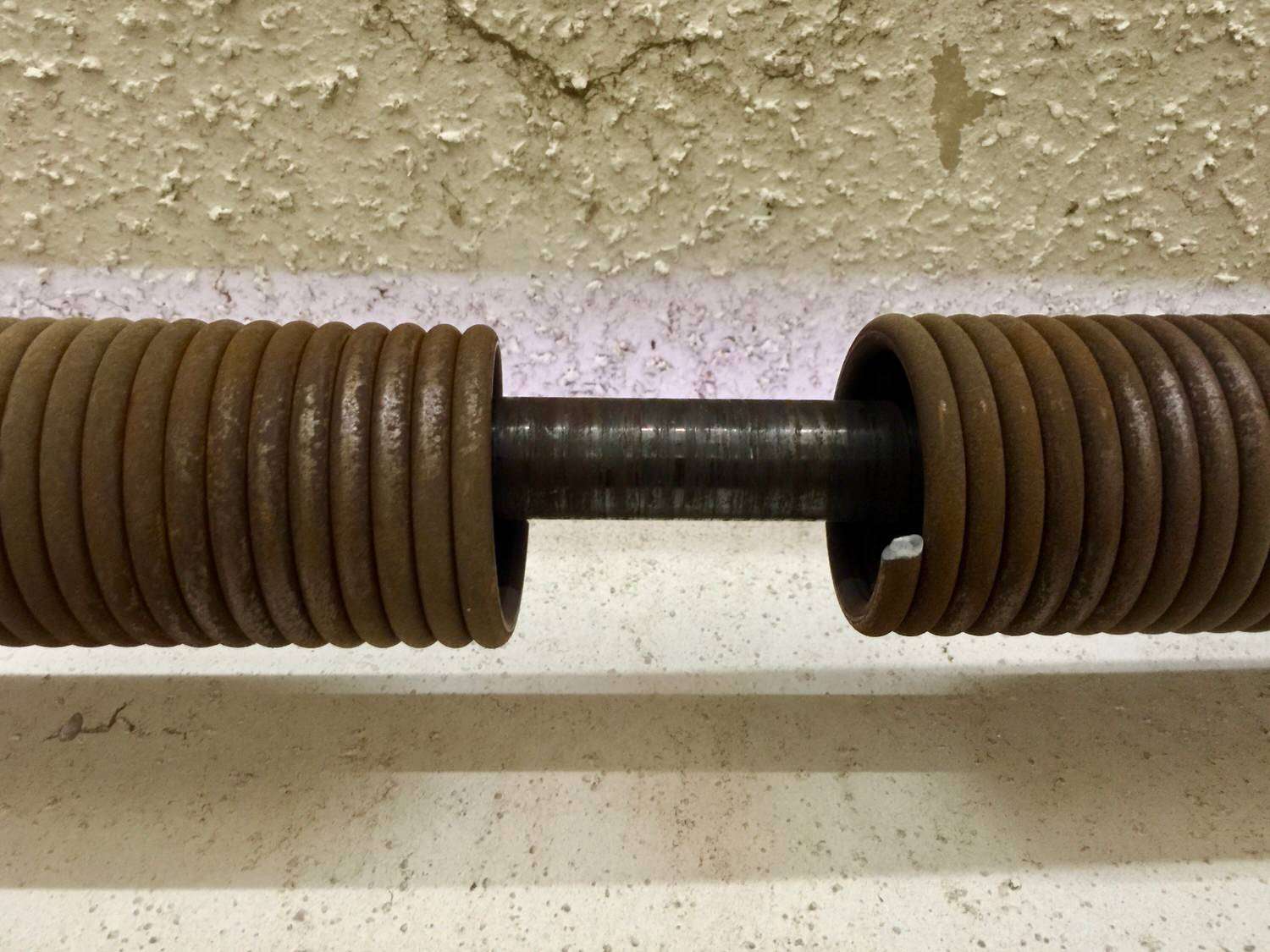
When a torsion spring is wound up, it grows 2 inches in length. This is because the spring starts to compress, and the metal has to go somewhere. After the spring is wound, the winding cone is clamped down on the torsion shaft, so it can turn the drums to wind the cables as the door goes up. Since the end of the spring is “set” on the shaft, a two-inch gap is left when the spring break’s. This is the most definite way of determining you have a broken garage door spring.
The Top Section of Your Garage Door Is Bent
The electric garage door opener tried to lift the garage door, and it bent the top section
Depending on the type and configuration of your door, your electric garage door opener might bend the top section when it tries to open your door with a broken spring. This is especially common when the “open force” has been maxed out on the circuit board.
The open and close force on garage door openers is there as a safety precaution to prevent scenarios like this one. Replacing your top section could be costly depending on the type of door you have. Occasionally, a simple strut replacement will suffice and bend the section straight enough to make it aesthetically pleasing for everyone.
Garage Door Falls Fast When Going Down
If your garage door falls faster than normal when closing it with your automatic opener, you might have a broken spring. Garage door openers are not designed to carry the weight of an unbalanced garage door. This can sometimes cause the door to fall faster than normal when being closed.
The speed in which it will close with a broken spring will be determined by your automatic opener. Some openers will free wheel and close faster than others due to the design of the drive system and motor. Others will handle the close much better, and you might not even notice a change.
You Pull the Emergency Release Rope and Can’t Lift The Garage Door
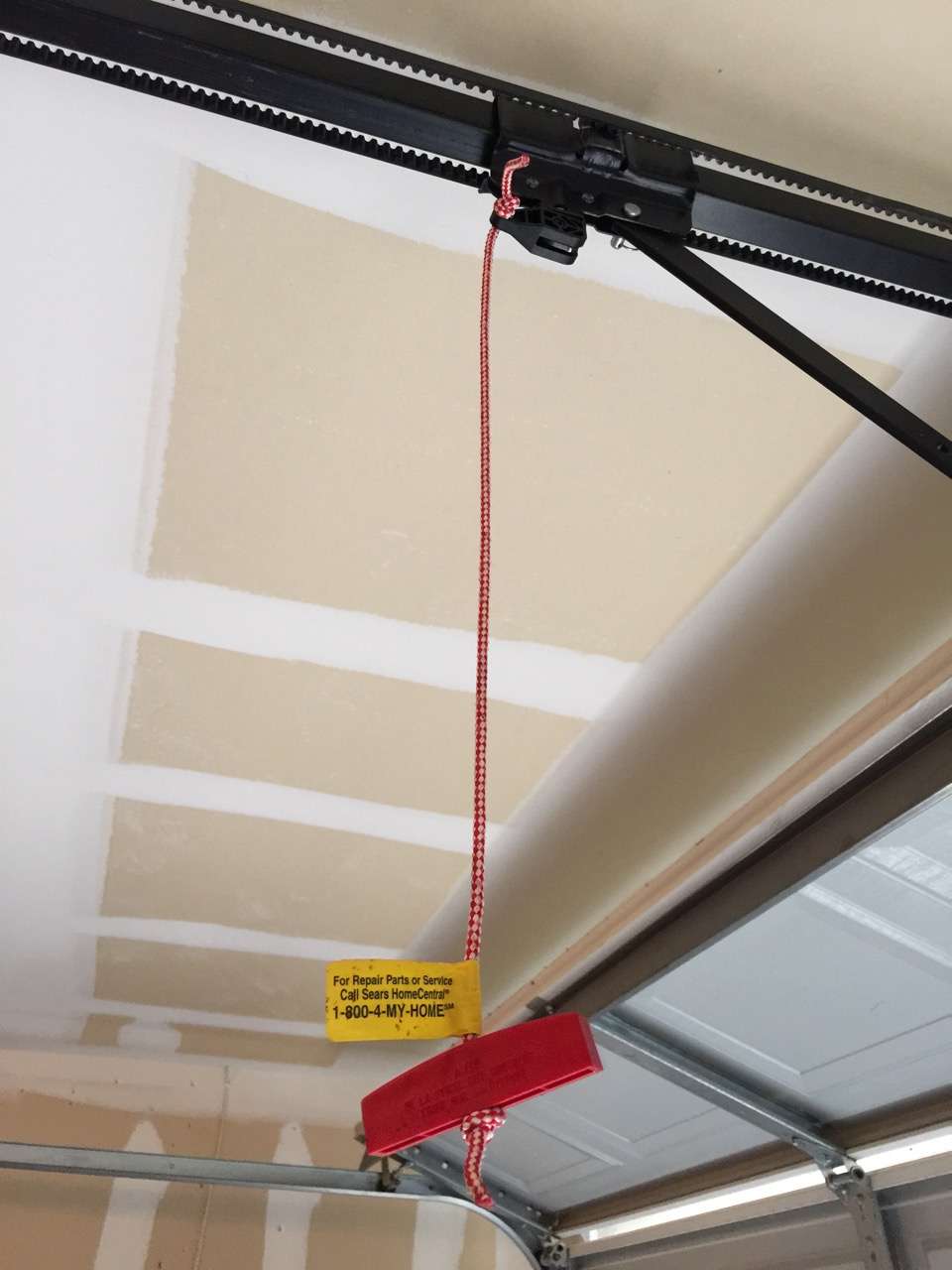
If you pull the red emergency release rope on your automatic opener, and you still can’t lift the garage door, you probably have a broken spring. The counterbalance spring is what lifts the garage door, not the garage door opener. If the spring is broken, the door is dead weight. A garage door can be lifted, but it is going to require some muscle to get it up. It is also important to lift the door evenly, so it does not jam in the tracks.
PRO TIP: We don’t recommend anyone lifting a garage door with a broken spring because it can be very dangerous if the door was to fall down on someone. If you must open it, gather two or three adults and make sure all children and pets are nowhere near the garage door.
Garage Door Is “Jerky” When Going up and Down
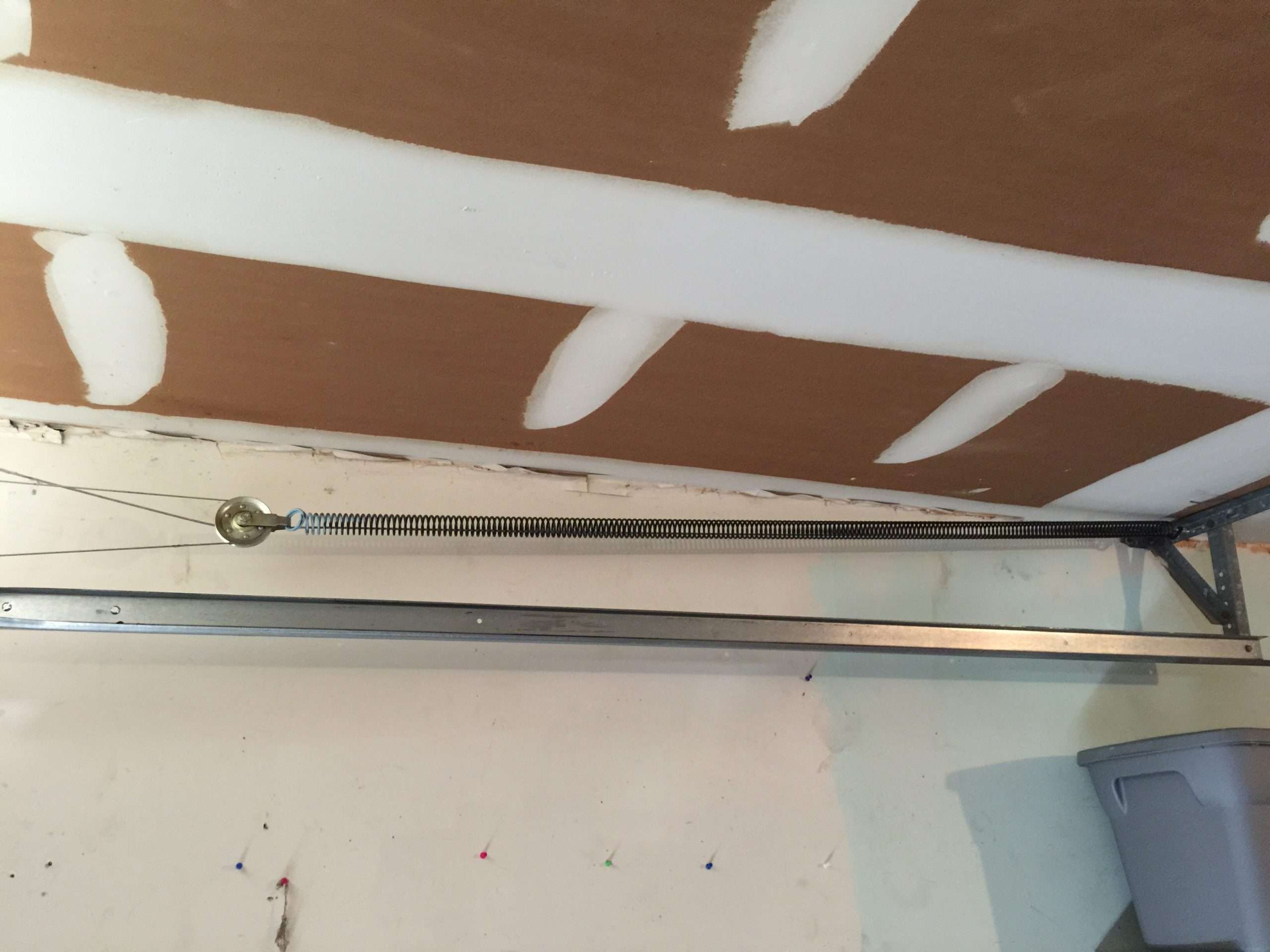
If your garage door goes up and down in a jerky motion, you might have one broken spring on a two-spring system. Some garage door openers are strong enough to lift a door with only one good spring. The “herky jerky” motion is especially common with garage doors equipped with extension springs. It might be something as simple as lubricating the garage door pulleys, hinges, and rollers. When in doubt or if something doesn’t feel right about your door, call a service company to have it serviced.
Garage Door Is Crooked When It Goes up and Down
Garage doors equipped with extension springs that stretch have independent suspension. Each spring is mounted on the side of the garage door, and they pull independently. If one spring breaks, that side won’t be pulling the door up. This can cause the door to go up crooked or possibly get stuck in the tracks.
The garage door will also look crooked when closed if you have one broken extension spring. The reason for this is there is only one extension spring on one side of the door, and it is fully extended in the down position. Because the other spring is broken, there is nothing balancing out the system, therefore causing the door to be crooked when closed in the down position.
The Cable and Pulley Are Hanging Down
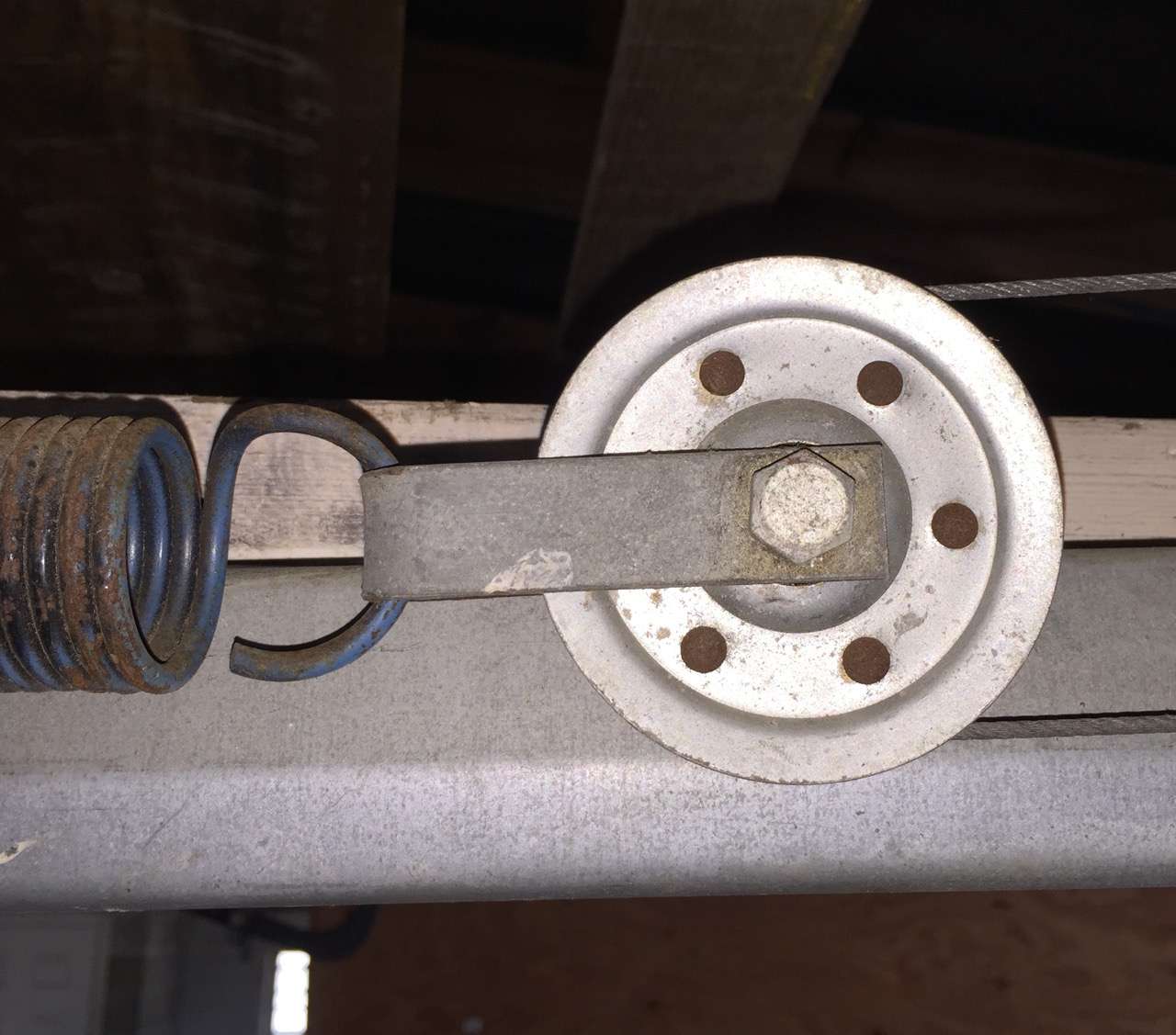
If your garage door is equipped with extension springs (usually seen on single car garages), the cable and pulley might be hanging down when the spring break’s. Extension springs use a two pulley system on each side of the door to lift the garage door up and down. When the spring break’s, everything goes haywire, causing the cables to become twisted or even frayed when they catch on the metal edge of the track. There is a lot of force being released when a garage door spring breaks.
My Garage Door Spring Broke, How Do I Get My Door Open?
Garage Door With One Torsion Spring
If your garage door is equipped with only one torsion spring, it will be much harder to get your door open. You will need to get 2-3 people to help lift the door up because the full weight can be anywhere from 150 to 300 pounds. We don’t recommend lifting the door when the spring break’s due to the danger of it falling on someone. If it is imperative that you get your garage door open, raw strength is what you need. When you get the door in the up position, use vise-grips or a c-clamp on the track below the bottom roller to hold the door in the up position.
Garage Door With Two Torsion Springs
If you have two torsion springs on your garage door, the good spring will most likely keep the cables on the drums when the other spring breaks. This makes it much easier to lift because the good spring will be pulling half the weight of the garage door. You can also use the garage door opener to help assist while someone lifts the door and acts as the broken spring. Use extreme caution when doing this, to prevent damage to your garage door or injury to a person.
PLEASE NOTE: We DO NOT recommend opening your garage door manually or with your automatic garage door opener if you have a broken spring. Garage doors are extremely heavy and pose a real danger when not properly balanced.
Recap: Common Signs of a Broken Garage Door Spring
- Cables are loose on one side or both
- Garage Door goes up 6″ when trying to open it with your electric garage door opener
- Garage Door is jerky when going up (you might have 2 springs and only 1 is broken)
- Garage door falls fast when going down using the electric garage door opener (you might have 2 springs and only 1 is broken)
- When you release the electric garage door opener from the door, the door cannot be physically lifted
- The electric garage door opener tried to lift the door and it bent your top section
- On extension spring setups, the door might be crooked because a spring is broken on one side
Conclusion
We have seen many instances where a homeowner never knew they had a broken spring on their garage door because their electric opener was strong enough to pull the door up and down with only one good spring. This is a scary situation because if anyone was to pull the red emergency release cord, the garage door would fall to the ground.
If your garage door opener is set up properly, the sensitivity should activate and stop a few inches off the ground when trying to open a door with a broken spring. This mainly pertains to garage doors that have two torsion springs because the good spring will still hold the cables in place. Otherwise, the cables on the sides would be all over the place.
